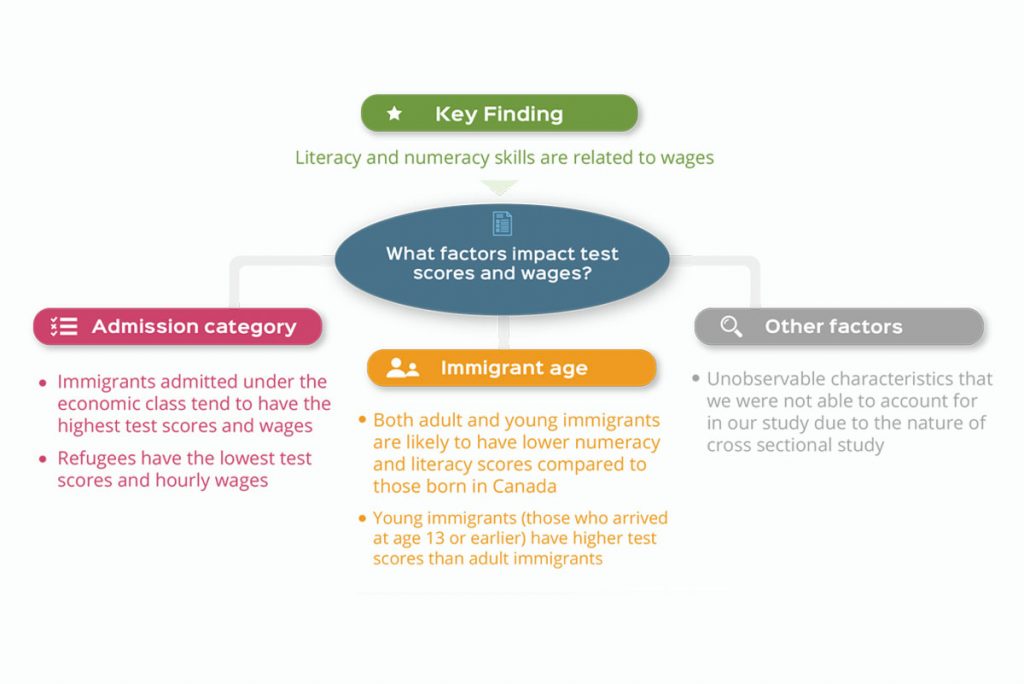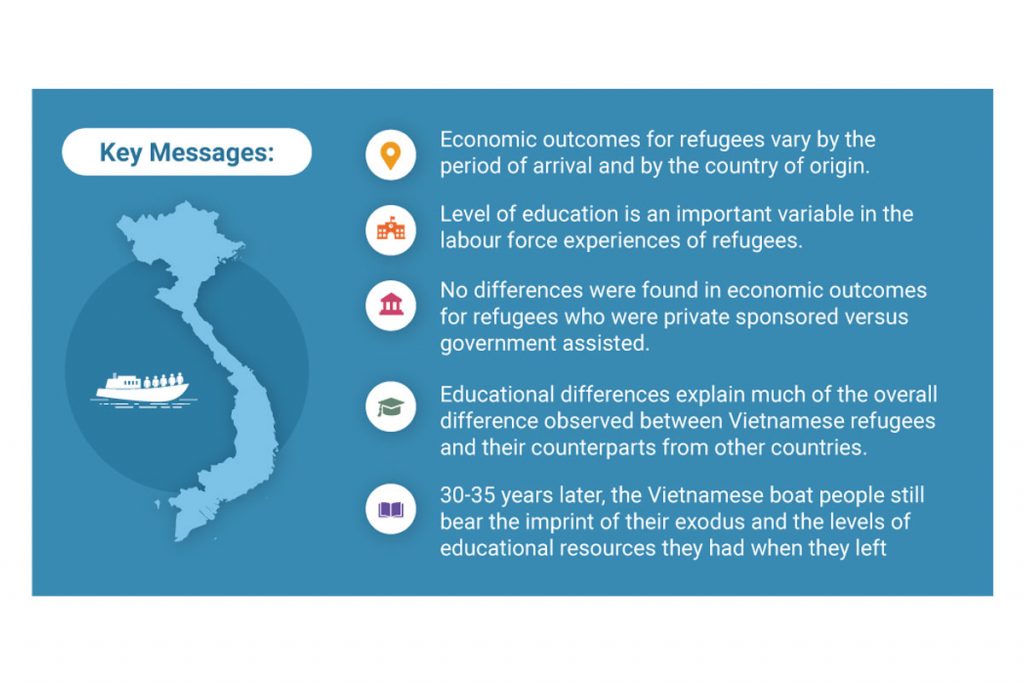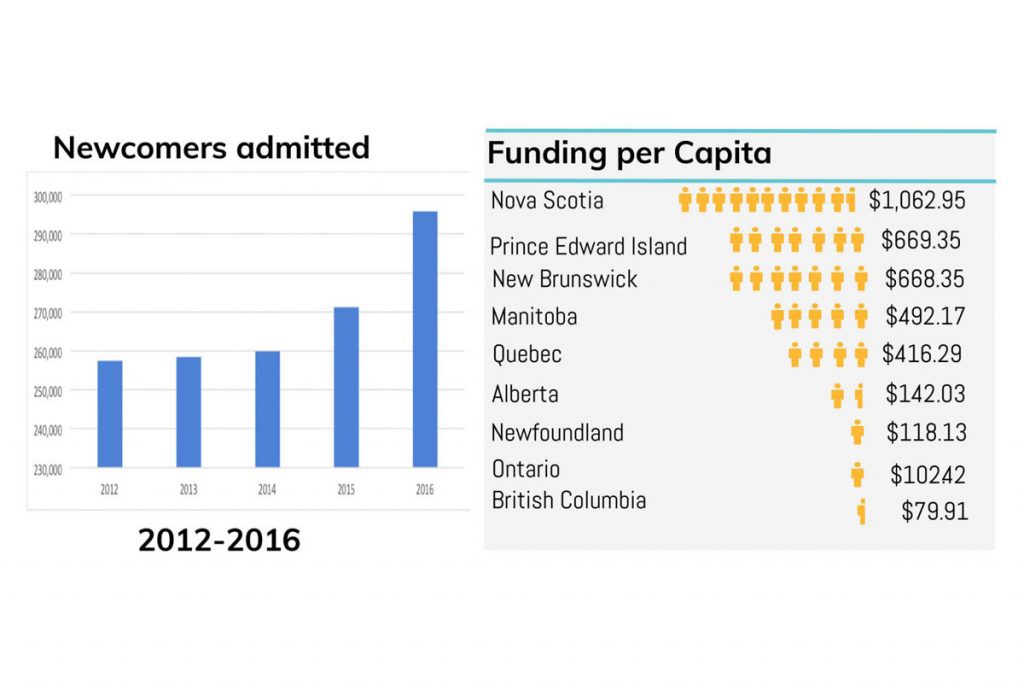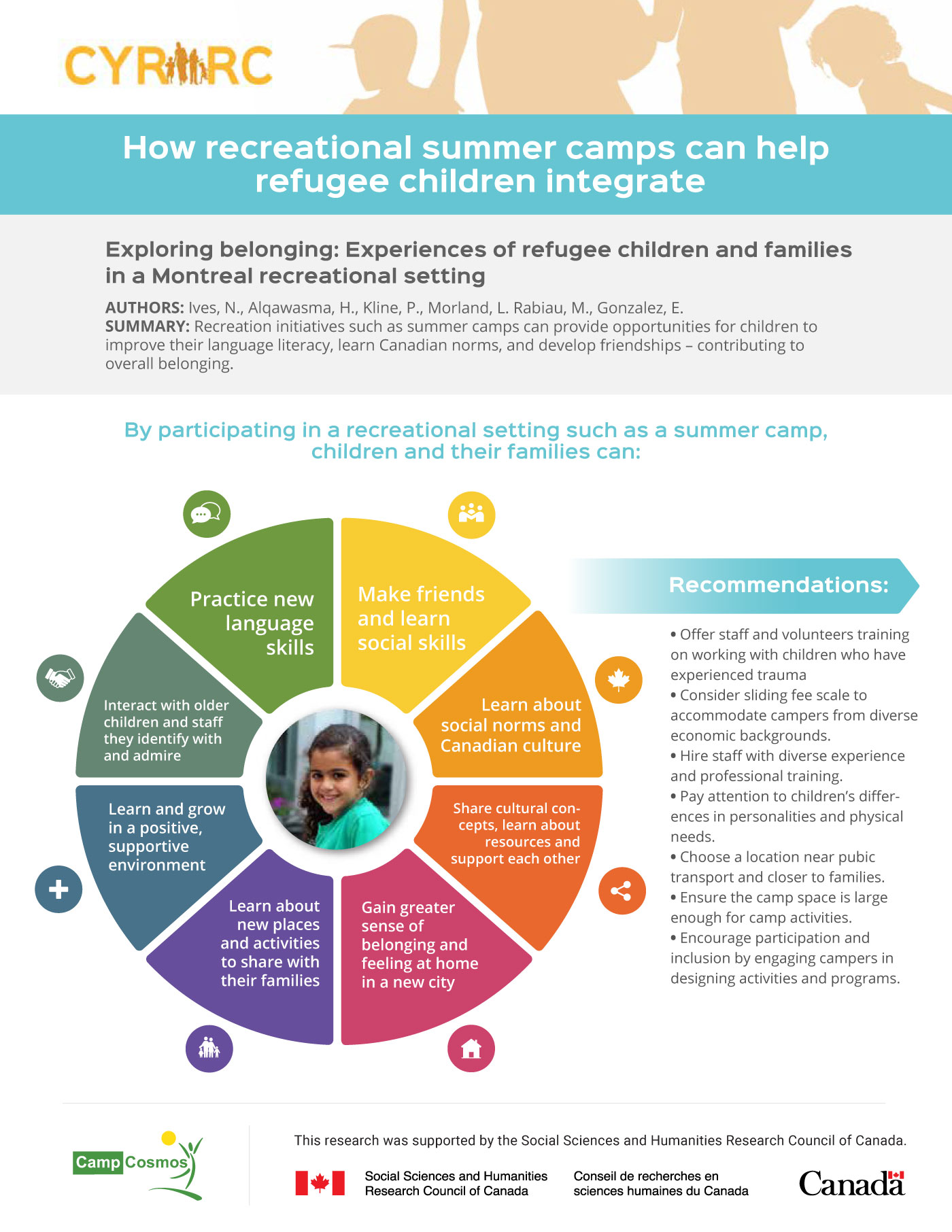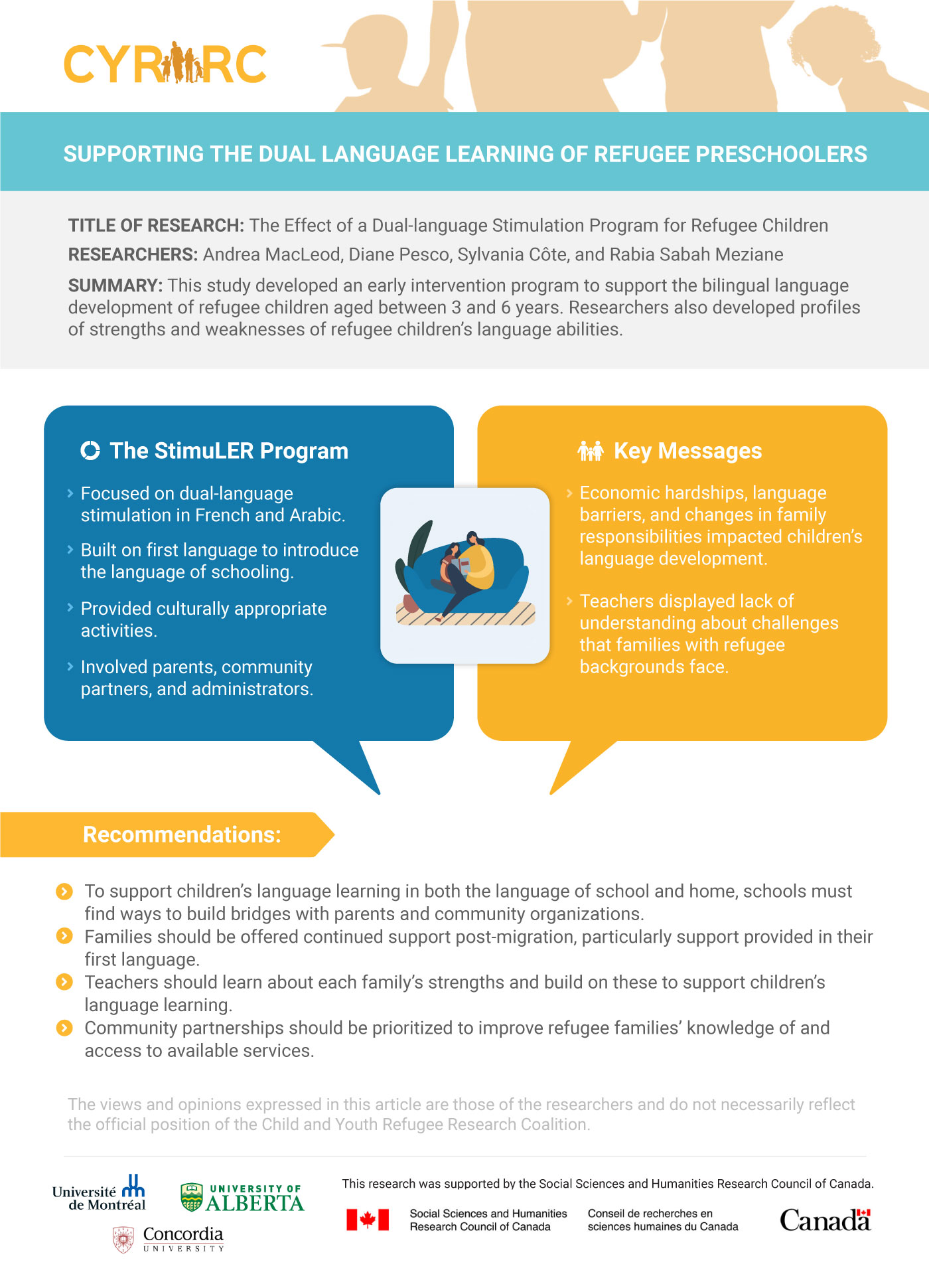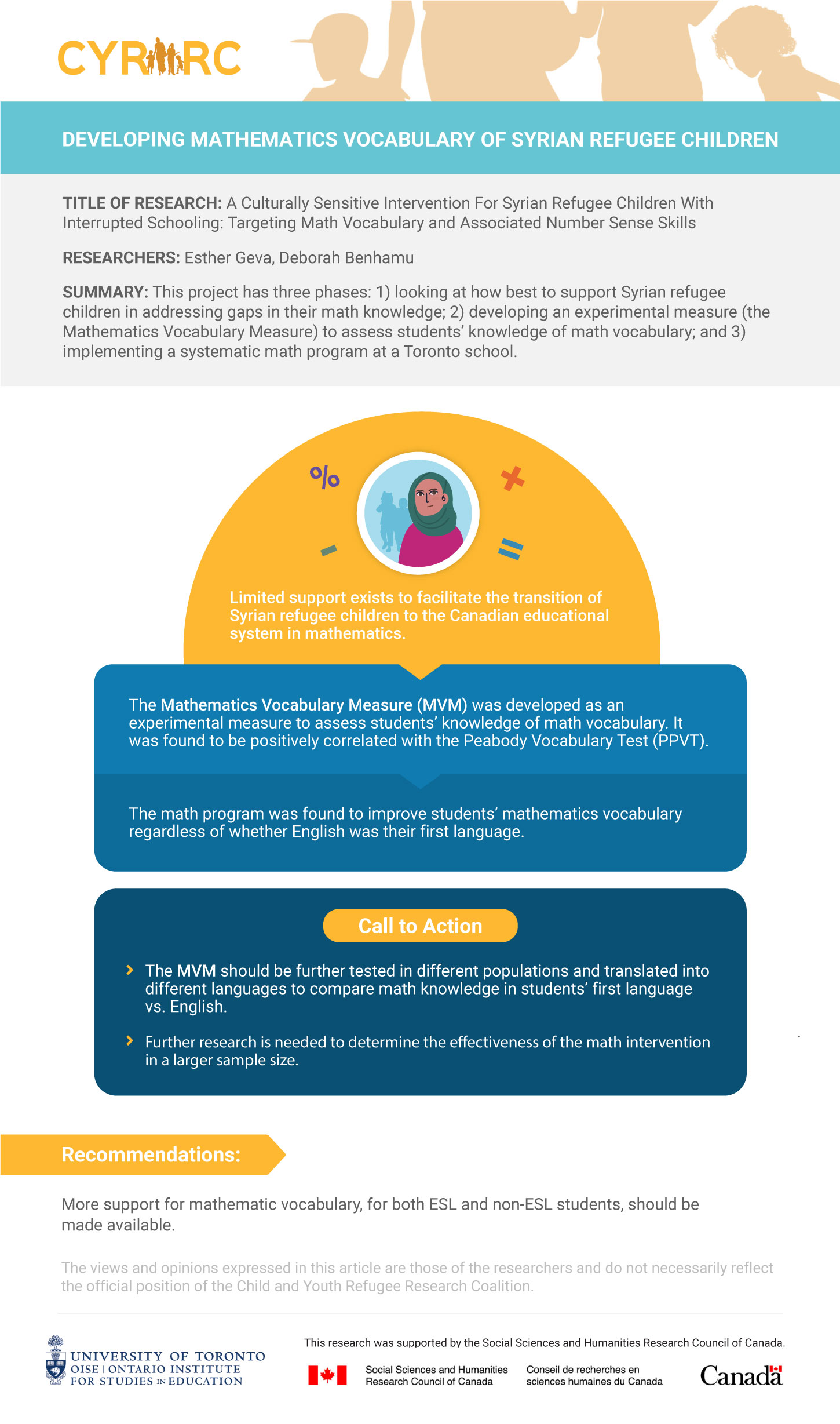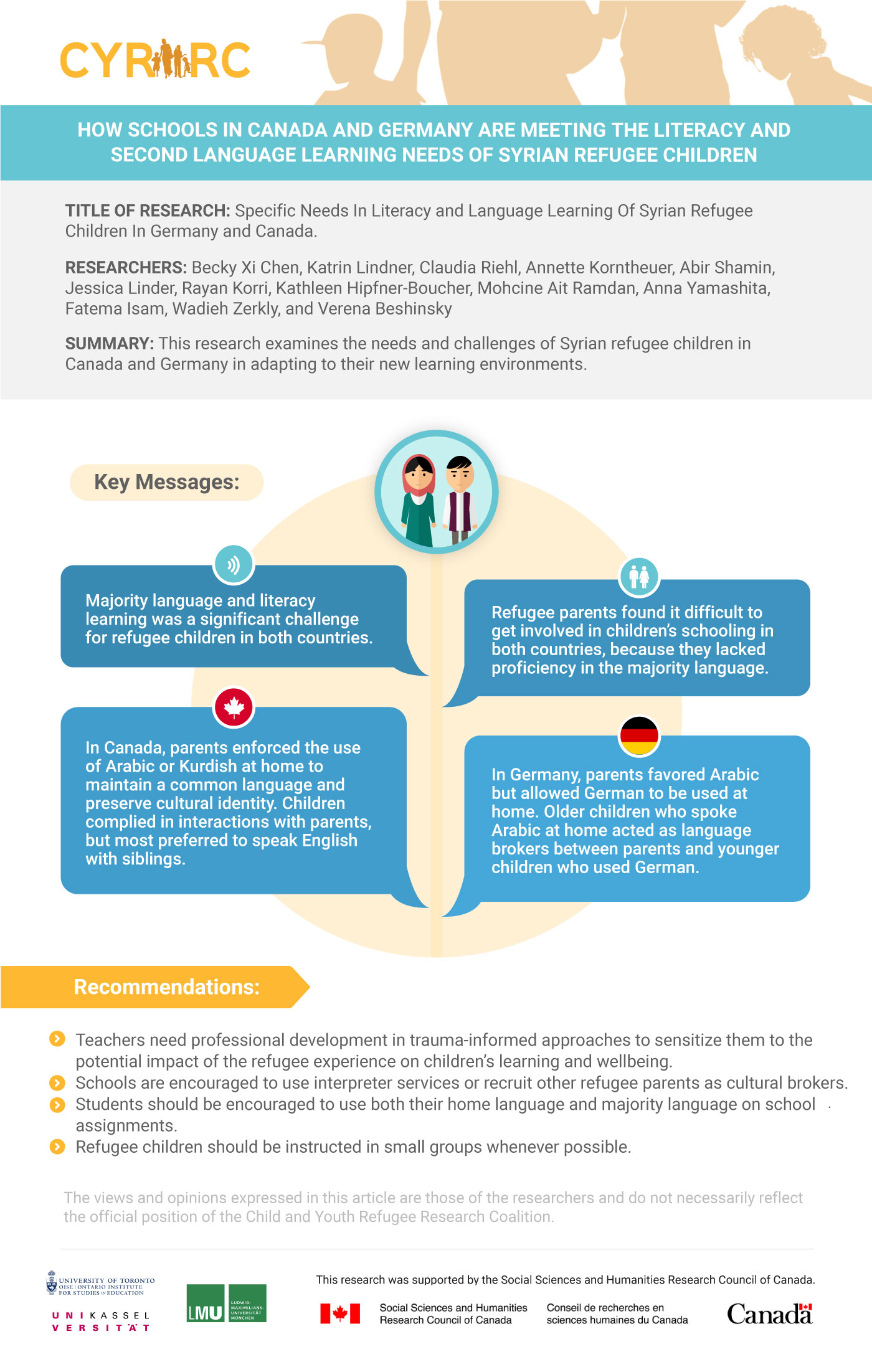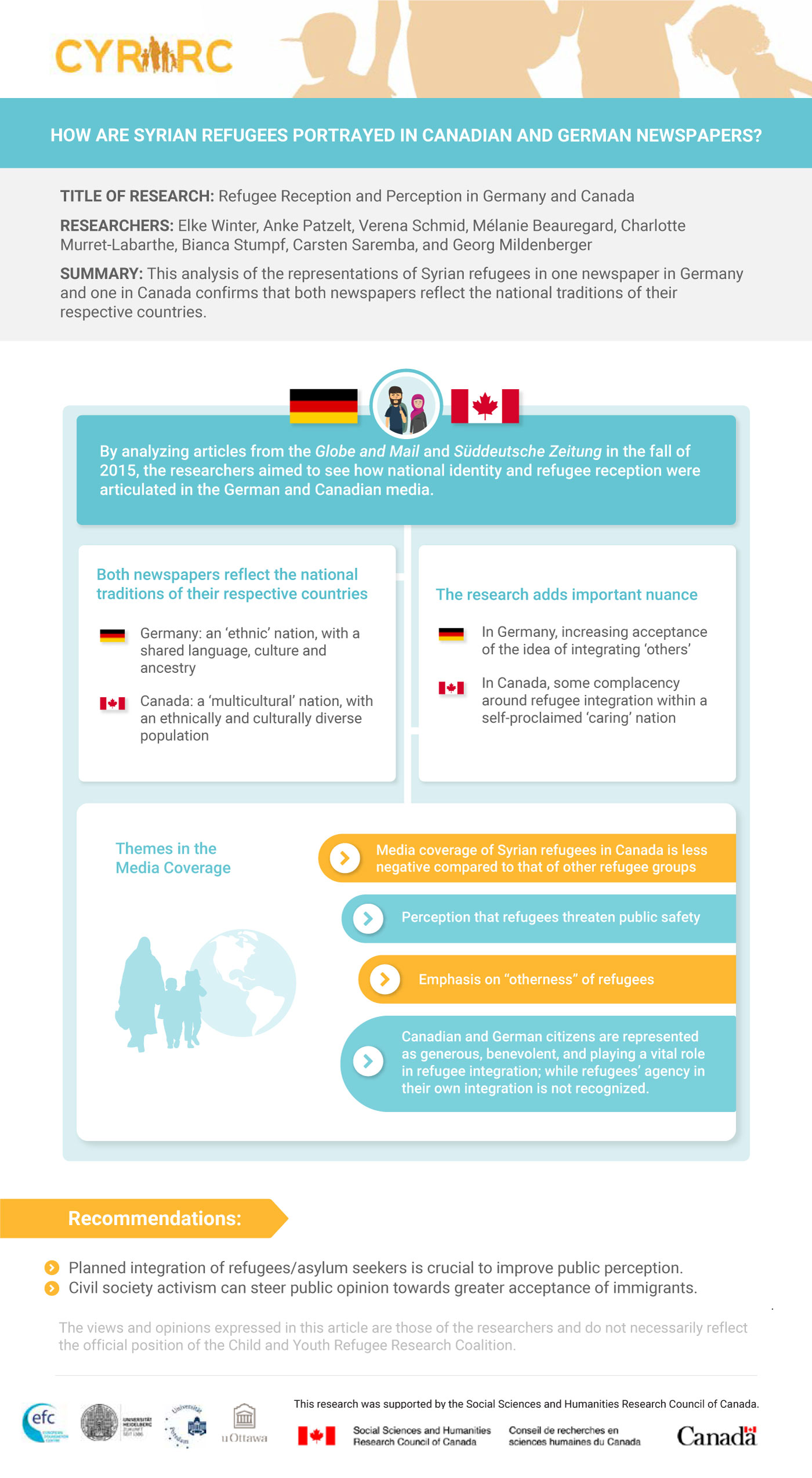Total projects funded
New projects in 2020
Partners engaged
Students trained
Funds disbursed (CAD)
Socio-Economic Research
Work in this cluster focuses on the economic outcomes of refugee children, youth, and families, as well as the broader social and political contexts that affect economic integration. Some researchers are examining the impacts of admission categories, country of origin, education, and numeracy and literacy skills on economic outcomes. Others explore labour market challenges facing refugee youth, supportive community programs, and trends in federal and provincial funding for settlement services. Projects from 2020 look at barriers faced by newcomer youth when transitioning from school to work and at the effects of immigration entry programs, age, and gender on socioeconomic integration.
How do newcomer youth experience employment?
Newcomer youth often start working in their teens.
Focusing on cohorts that arrived between 1980 and 2000, Yoko Yoshida and colleagues (2018) found that three quarters of refugee and immigrant youth began working before they turned 20 years old.
They also found that those who arrived in Canada at a younger age start working at an earlier age.

75% of newcomer youth who were aged 0 to 5 when they arrived in Canada began working when they were 16 to 19 years old. 8% began working when they were 12 to 15 years old.
For those aged 6 to 12 when they arrived, 78% began working before they were 20 years old. For those aged 12 to 17 at arrival, the rate was 67%.
Click to view Age of First Earnings of Refugee Children and Youth by Landing Age (1980-2000 Cohort).
Newcomer youth face pressure to earn an income.
Ray Silvius and colleagues (2020) found that many older refugee youth experienced pressure to work and contribute to their family’s upkeep.
Reza Nakhaie (2019) found that many refugee families live in near- poverty, and that refugee youth may feel pressure to skip school for work so that they can help meet the family’s financial needs.


Employment can impact education for refugee youth.
Reza Nakhaie (2019) found that full-time employment predicted greater resistance to school among refugee youth.
Ray Silvius and colleagues (2020) found that the pressure to work was a significant challenge for refugee youth with interrupted formal education going to school in Canada.
Education predicts economic outcomes.
Monica Boyd and colleagues (2020) looked at refugees from Vietnam arriving between 1979 and 1981 — colloquially labeled “Boat People”. For those who landed as youths (before high school age) or older adolescents, educational attainment predicted future economic outcomes, including occupation and earnings.


Career goals change as language skills improve.
Lisa Rochman and colleagues (2020) looked at adult newcomers aged 19+ who completed the LINC (Language Instruction for Newcomers to Canada) program.
36% who initially planned to pursue further education chose instead to focus on employment.
25% who initially planned to pursue employment switched their focus to further education.
Adult newcomers changed their career goals based on many complex social, relational, and economic factors.
Balancing employment and education is a challenge for all young people, but newcomers — especially refugee youth — face extra pressures and complexities.
Early entry into the labour force usually means youth have less time to study, socialize, or participate in leisure activities. At the same time, beginning to work can mean economic independence, contributing to family income, and gaining work experience.

- Project Infographics
Mueller 1C “How improving literacy and numeracy affects labour market outcomes” (2019)
Click to view infographic
Clement 1H “Government funding for settlement services” (2019)
Click to view infographic
Boyd 3A “Did private sponsorships create advantageous economic outcomes for the Vietnamese “Boat People”?” (2020)
Click to view infographic
1A Clement “Immigration and Refugee Settlement in Canada: Trends in Public Funding” (2018)
Click to view infographic


